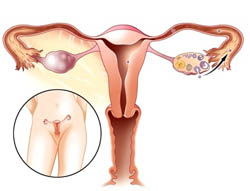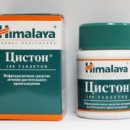For many women frightening diagnosis «cyst in ovarian fabric» already sounded, and many representatives of wonderful sex may still have to hear him from her attending physician. Unfortunately, both women themselves, and their gynecologists often underestimate the danger of this ailment. Such carelessness often leads to the most severe consequences for the health and life of patients.
What is a cyst in the ovarian fabric?

Any cyst is the rounded thin-walled cavity filled with semi-liquid secret, blood or other content. The ovarian cyst is similar. Depending on the characteristics of the structure, the contents, the rate of growth and the inclination of these pathological formations are divided into several types:
- Functional cystic education:
- luteine;
- Follicular.
- Music;
- Dermoid;
- serous;
- parapal;
- Endometrioid.
Some cysts practically do not harm the body, others, on the contrary, can carry a major threat to the health and life of a woman. So, for example, the formation of a functional cyst is directly related to cyclic transformations occurring in the ovaries. Follicular cyst is formed from an unexploded follicle, and a luteinic - from the non-seruous temporary gland of the internal secretion, which is formed after ovulation and producing progesterone. The development of these formations is hormonal changes. Most often, the functional cyst disappears independently, as the filtering filling and falling off the cystic cavity is dissolved.
It is much more difficult to deal with the so-called true cysts. The cavity of these formations is filled, depending on their variety, old blood, serous liquid, thick mucus, embryonic recesses (hair, souse, cartilage, bones, teeth and other fragments of the body of the body), and the cysts themselves are capable of achieving gigantic sizes. In addition, mercine and endometrium cysts are highly susceptible to malignant reincarnation.
How to recognize the disease?
It is rare on yourself to suspect the ovary cyst of the ovary of the ovary: as a rule, the disease occurs and develops almost asymptomatic. Only in some cases the patients note minor pains in the lower abdomen and an increase in the duration of menstruation. Thus, only a gynecologist can identify an uncomplicated ovarian cyst during a planned periodic inspection. In some particularly difficult cases, it is possible to deliver the correct diagnosis using diagnostic laparoscopy.
Than dangerous cyst ovarian?

Eight out of ten ovarian cysts are functional and disappear independently, with the beginning of the next menstrual cycle. In other cases, these pathological formations increase to significant sizes and cause a woman serious discomfort, disturbing the work of neighboring internal organs.
Pathological formations having the shape of a mushroom on the leg make in themselves increased danger: with random twisting legs, the supply of the circulating cyst of blood vessels occurs. As a result, the cyst is dead, caught up and breaks into the abdominal cavity. Such event of events threatens the injured woman with a hardest complication - peritonitis.
Often the cyst of the ovary becomes straight The cause of female infertility. However, the most serious complication is considered to be the rebirth of benign cystic education in a malignant tumor.
How to Return Health?
Most functional cysts are easily amenable to drug correction. Pathological formations arising from hormonal failure are treated with hormonal funds, and cysts formed against the background of the inflammatory process - with the help of antibiotics and anti-inflammatory drugs.
During dermoid, serous, mucinous and endometride cysts, surgical intervention is shown. In this case, the tactics of treatment directly depends on the severity of the symptoms, the age of the woman and the risk of zero-quality cysts. In most cases, pathological education is removed using laparoscopy, that is, through narrow cuts in the field of poup. If there are special testimony (for example, in cases where the cyst reaches too large) patients make a weighty operation with a cross-section cross section.
The most important thing in the process of treatment is the timely detection of pathology. That is why each woman must be aware of the importance of regular gynecological examinations and not neglect the planned preventive visits to the doctor.









